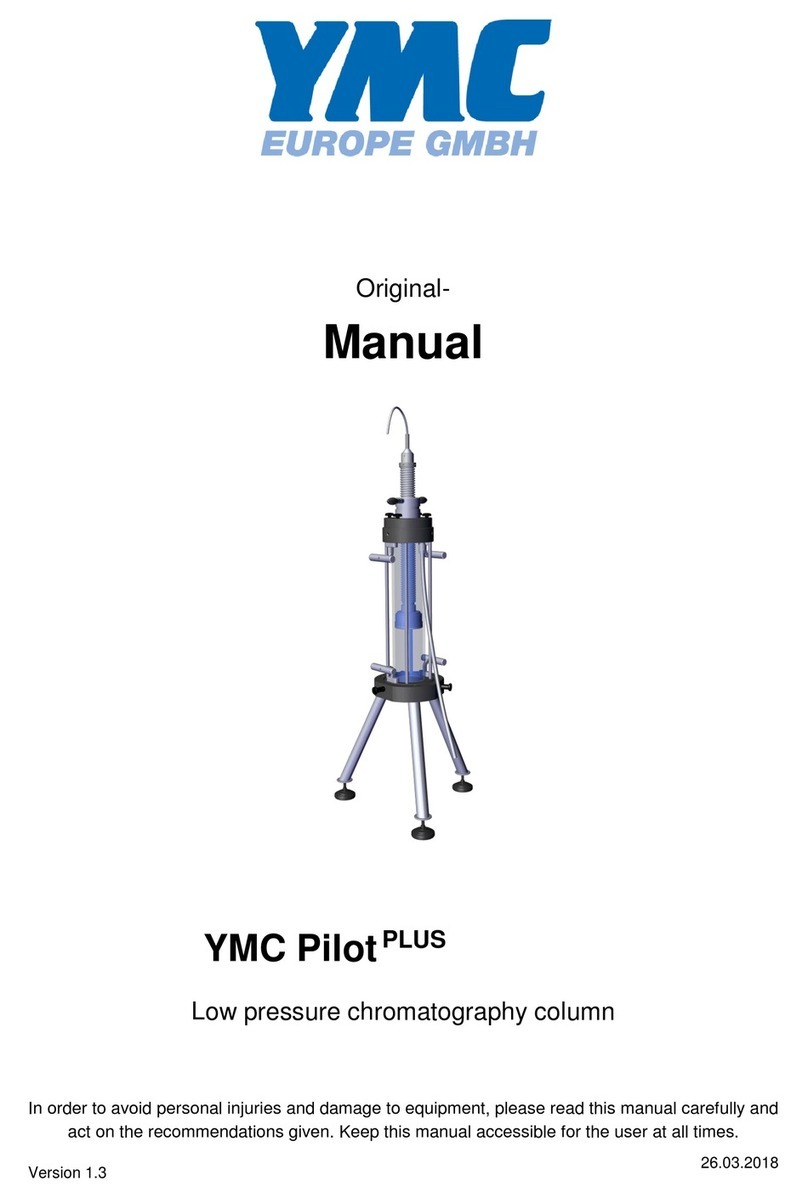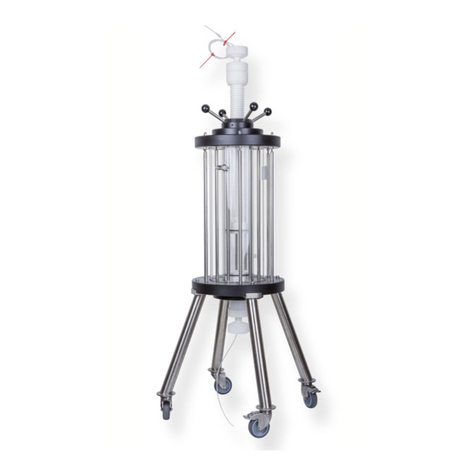
3
Low pressure chromatography column - Pilot series
Contents
1. Safety............................................................................................................... 5
1.1. Explanation of warning messages............................................................ 5
1.2. Layout of instructions ............................................................................... 6
1.3. Fields of applications................................................................................ 6
1.4. Intended use............................................................................................. 7
1.5. Personnel requirements............................................................................ 7
1.6. Personal protective equipment ................................................................ 7
2. Delivery............................................................................................................. 8
2.1. Delivery contents...................................................................................... 8
2.2. Delivery inspection ................................................................................. 10
3. Starting operations ...................................................................................... 11
3.1. Safety instructions for use...................................................................... 11
3.2. Column construction .............................................................................. 12
3.3. Specifications ......................................................................................... 14
3.4. Chemical resistance ............................................................................... 15
3.5. General operations ................................................................................. 17
3.5.1. Tightening and loosening of the O-ring........................................ 17
3.5.2. Adjusting the stamp height........................................................... 17
3.5.3. Connecting the tubing.................................................................. 17
3.6. Dismantling............................................................................................. 18
3.6.1 Dismantling of the column............................................................. 18
3.6.2 Dismantling of the glass body ....................................................... 19
3.6.3 Dismantling of the plunger ............................................................ 20
3.6.4 Removing of the frit ....................................................................... 21
3.6.5 Dismantling of the fixed stamp...................................................... 21
3.7. Cleaning.................................................................................................. 22
3.8. Assembling............................................................................................. 23
3.8.1. Assembling the frit........................................................................ 23
3.8.2. Assembling the plunger................................................................ 23
3.8.3. Assembling the glass body .......................................................... 24
3.8.4. Assembling the column ................................................................ 26
3.9. Pressure test........................................................................................... 27
3.10. Packing adapter ..................................................................................... 29
Contents





























